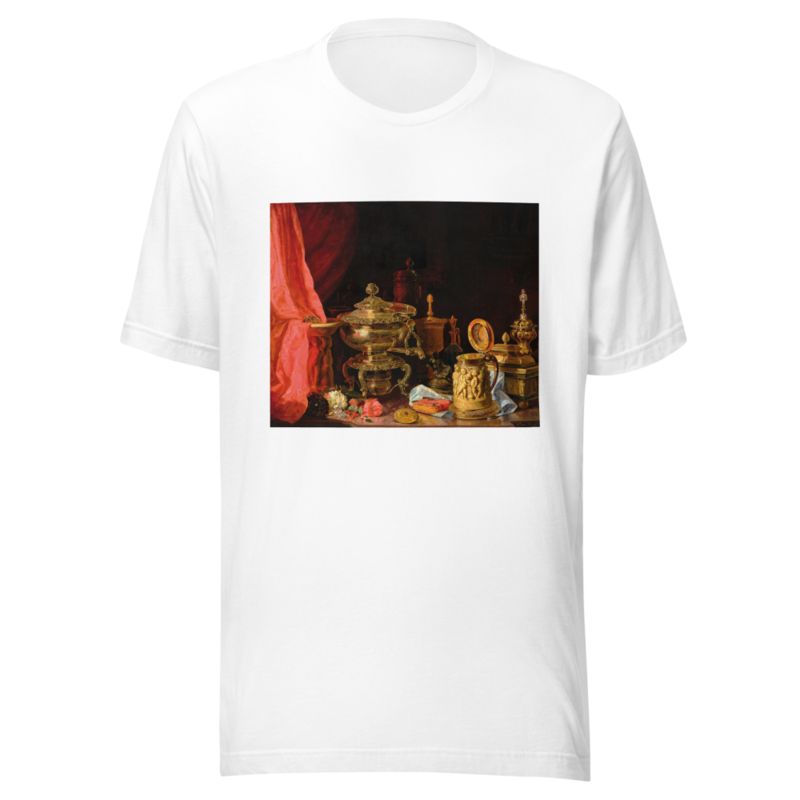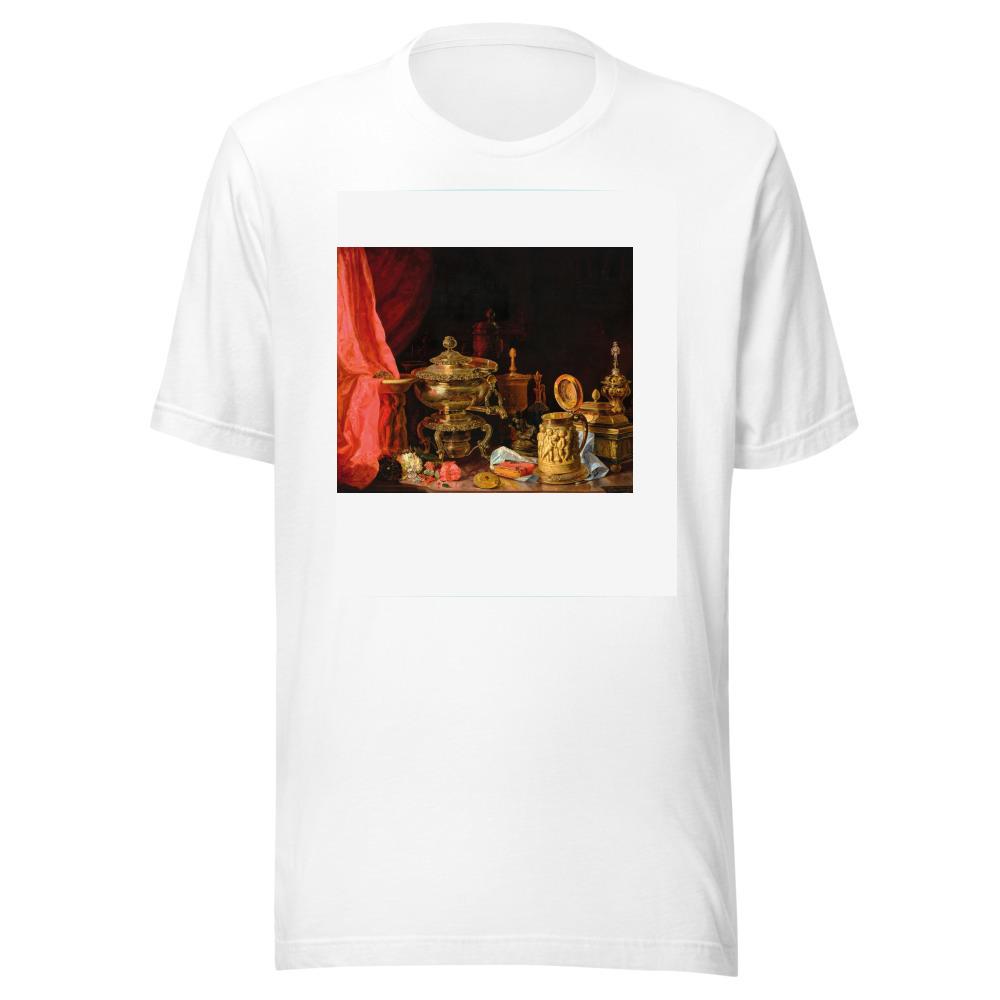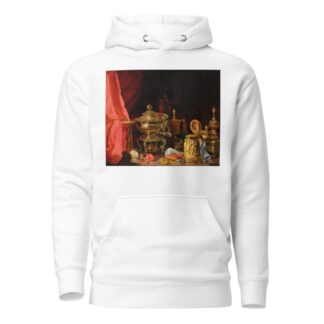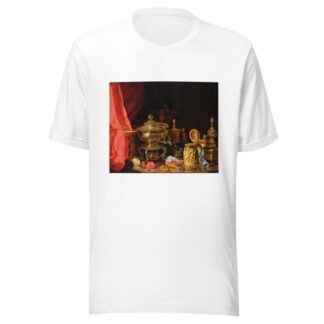Description
Still Life with Flowers, a Tankard with Figural Decor and Samovar by József Borsos printed on a T-Shirt
About the T-Shirt
Regular fit
Standard length, the fabric easily gives into movement
Casual wear
A classic, everyday option loved by our customers
Side-seamed
Constructed by sewing two parts together, creating a fitted look
The Unisex Staple T-Shirt feels soft and light with just the right amount of stretch. It’s comfortable and flattering for all. We can’t compliment this shirt enough–it’s one of our crowd favorites, and it’s sure to be your next favorite too!
- Solid colors are 100% Airlume combed and ring-spun cotton
- Ash color is 99% combed and ring-spun cotton, 1% polyester
- Heather colors are 52% combed and ring-spun cotton, 48% polyester
- Athletic and Black Heather are 90% combed and ring-spun cotton, 10% polyester
- Heather Prism colors are 99% combed and ring-spun cotton, 1% polyester
- Fabric weight: 4.2 oz./yd.² (142 g/m²)
- Pre-shrunk fabric
- 30 singles
- Side-seamed construction
- Tear-away label
- Shoulder-to-shoulder taping
- Blank product sourced from Nicaragua, Mexico, Honduras, or the US
József Borsos (1821–1883)
Jozsef Borsos was a Hungarian portrait painter and photographer; best known for his genre paintings in the Biedermeier style.
His father, Márton Borsos was a lawyer, editor and publisher. From 1837, he was a student of the religious artist, József Károly Schöfft [hu], in Budapest. He transferred to the Academy of Fine Arts, Vienna in 1840, where he studied with Leopold Kupelwieser. In 1843, he changed schools again, attending a private academy operated by Ferdinand Georg Waldmüller.
He initially chose to live in Vienna, with a large clientele from the Austrian aristocracy. Financially successful, he lost most of his money speculating in the stock market, and returned to Budapest in 1861. There, he chose to abandon painting and opened a photography studio, together with a painter and photographer known as Doctor Albert [hu]. Once again, he was able to accumulate a considerable fortune, but gave up photography and opened a restaurant, the “Szép Juhászné”, which he ran for the rest of his life.
Many of his works are in private collections, but some may be seen at the Hungarian National Gallery.






Reviews
There are no reviews yet.